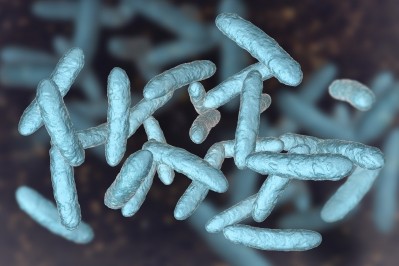Multi-strain probiotic didn’t change healthy guts much, but study results hint at metabolic syndrome benefits

The study was conducted by researchers from the Roselle Institute, a division of Canadian probiotics supplier Lallemand, and researchers associated with the University of Florida. The study was published this month in the Journal of Dietary Supplements.
Study used eight strains
The study was meant to test the outcomes of using differing doses of an off the shelf multi-strain probiotic supplement, in this case the Jarro-Dophilus EPS and the ‘high potency’ version of the same product. The supplements are manufactured by Jarrow Formulas and use proprietary Lallemand strains.
The included strains are: Lactobacillus helveticus R0052, Lactobacillus rhamnosus R0011, Pediococcus acidilactici R1001, B. longum ssp. longum BB536, L. casei R0215, L. plantarum R1012, B. breve R0070, and Lactococcus lactis ssp. lactis R1058. The Jarrow products are labeled with overall CFU counts for the probiotic blend, but do not break out how much of each strain is included, nor did the researchers. The lower dose product is labeled to contain 5 billion CFU, while the higher dose is 25 billion CFU.
The researchers designed their test as a double blind, placebo controlled study looking for what happens to these probiotic species when administered to healthy subjects. In gut health research this has long been a sticking point. Probiotic supplementation has been shown to have beneficial effects in cases of gut dysbiosis. These products have also been shown to have benefits in cases of transient dysbiosis, such as with irregular bowel habits associated with traveling. But what does the story look like for subjects who are not complaining of any intestinal distress?
Hypothesis: Overall gut microbiome profiles would remain steady
The study recruited 69 subjects in Florida who were divided into three groups: low dose, high dose and placebo. The researchers started out with a hypothesis that after the 28-day intervention the probiotics would not have significantly changed the gut makeup of these subjects. Past research has shown that ‘healthy’ guts tend to remain at or quickly return to their baseline condition in terms of the species mix and distribution.
But given this strong predilection toward homeostasis for healthy guts, would the probiotics survive at all? Or would they be throughly outcompeted by the resident species that were favored, presumably by the host’s genetic makeup?
The researchers took three stool samples from each subject: before and after the 28-day intervention and after a 1-week washout period. Subjects periodically completed gut health symptom questionnaires and tallied the appearance of their bowel movements on the Bristol Stool Form Scale, which were used by the researchers to infer transit times. The stool samples were analyzed for microbial DNA using several generally accepted techniques and statistical analyses.
“This study demonstrates the safety of the supplemented product, even at the highest dose tested, in a sample of the general adult population independently of baseline microbiota composition interpersonal variability. Supplemented strains were detected in the feces proportionally to the dose administered,” the researchers concluded.
Subtle changes in microbiome distribution point to further avenues for research
But while the intervention did not move the needle much as regards the overall gut microbiome, the small ways in which it did change point to further research possibilities in subjects with health challenges.
“Although the supplemented product only affected microbiota composition minimally, the increase in Bacteroidales and decrease in Holdemania following supplement administration suggest that assessing the potential positive impacts of this formulation in individuals with obesity or metabolic disease is warranted based on existing literature. In addition, further characterization of individual strain persistence using time-course analyses is required and should be assessed in future studies,” the researchers added.
Mary Ellen Sanders, PhD, principal in the consulting firm Dairy & Food Culture Technologies, said the study is a useful addition to the research around the multi-strain approach to probiotic supplementation. This has become a significant trend in the market.
“This study utilized strain-specific identification to track the fate — in feces — of ingested strains from a multi-strain probiotic formulation. This is useful technology for designing and understanding multi-strain probiotic products. The study findings, that common species of probiotics do not substantively impact the fecal microbiota of healthy adults, reinforces what other investigators have found,” Sanders told NutraIngredients-USA.
Source: Journal of Dietary Supplements
doi.org/10.1080/19390211.2020.1749751
Safety and Effect of a Low- and High-Dose Multi-Strain Probiotic Supplement on Microbiota in a General Adult Population: A Randomized, Double-Blind, Placebo-Controlled Study
Authors: Tremblay A, et al.
















